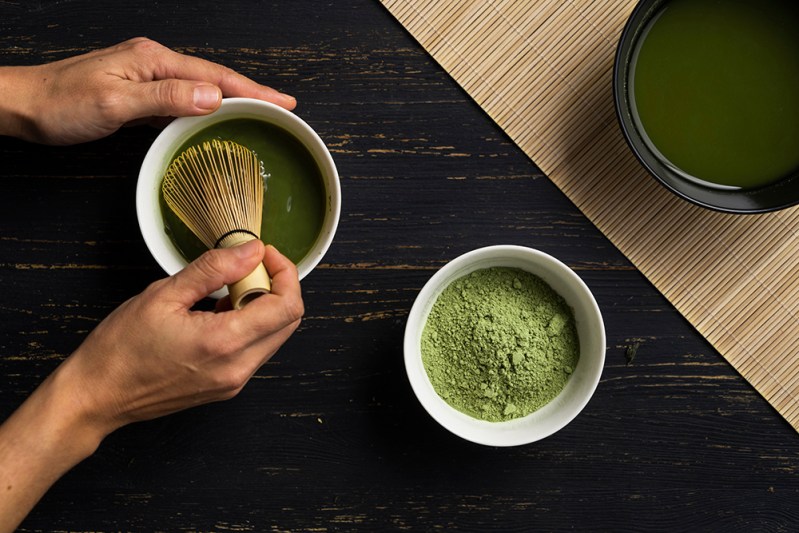
Ever wondered what’s in that gorgeous green drink you’ve seen all over the ‘gram? That frothy, bright green latte, ice cream, and even doughnuts everyone is making much to do about is Matcha. This vibrant green tea has taken the main stage here in recent years, but it’s been a staple in East Asian culture for centuries, rooted in spirituality and highly regarded for its health benefits.
There are many ways to enjoy a cup of Matcha but its truest form is as simple as it is delicious. Here we’ll cover the brew’s basics so you can whisk your way to a big green cup of morning bliss.
Related Guides
What is Matcha?
Similar to loose leaf green tea, matcha comes from the Camellia sinensis plant but it differs in its cultivation and brewing process. Matcha is made from young green tea leaves that have been ground into a powdered form. The powder is then whisked with hot water to create a bright green, earthy tasting frothy drink. This method dates back to early China before the use of teapots but once the process of steeped tea became more popular, the tradition still remained as a ceremonial ritual in Japanese culture.
Types of Matcha
There are three grades of Matcha (along with our favorite matcha brand for each category) that you will see on the shelves. While they may look similar they each vary in taste and price range.
Ceremonial: Ippodo Matcha

Ceremonial is considered to be the highest quality of matcha and is made from the youngest tea leaves in granite stone mills to produce the freshest and smoothest ground matcha. This tea is the most expensive and is said to have a more robust flavor.
Premium: Jade Leaf Organic Ceremonial Matcha

Premium is still considered high-quality but does not go through the same process as the ceremonial grade. It has a medium price point and a more subdued flavor.
Culinary: Sunfood Superfoods Matcha Green Tea Powder

Culinary is cultivated from the lower leaves and put through a less meticulous grinding process. It is the least expensive and has a more bitter taste and it is often used in cooking or baking.
What are the Benefits of Matcha?
Since matcha is formed from the full green tea leaf, it retains all of the nutrients resulting in a higher level of antioxidants and caffeine than steeped green tea. Science has linked the health benefits of matcha to boosting brain function, preventing liver and kidney damage, protecting against heart diseases and weight loss.
Matcha does have a more concentrated level of caffeine than regular green tea but compared to its caffeinated coffee counterpart, the stimulation is more subtle and focused as opposed to nervous and jittery.
How to Drink Matcha

There’s an art to the perfect cup of matcha that dates back to its Japanese roots.
With a few simple steps, you can have a ceremony fit for the green tea gods.
- Bring about 1/3 cup of water to a boil. Remove from heat and let cool for 2 to 3 minutes.
- Place 1/2 teaspoon matcha powder in a small bowl. Add a splash of the hot water and mix with a bamboo or regular whisk to form a smooth paste.
- Carefully, pour the remaining water into the bowl and stir with the whisk until the matcha is blended and there is a frothy foam on top.
Matcha Tips:
- Adjust the amount of liquid for a thinner or thicker consistency.
- Substitute your preferred milk for water to create a delicious latte and add sweetener if desired.
- The fresher the matcha the better, ground tea should be used within 2 months of opening and stored in a dark cool place.



